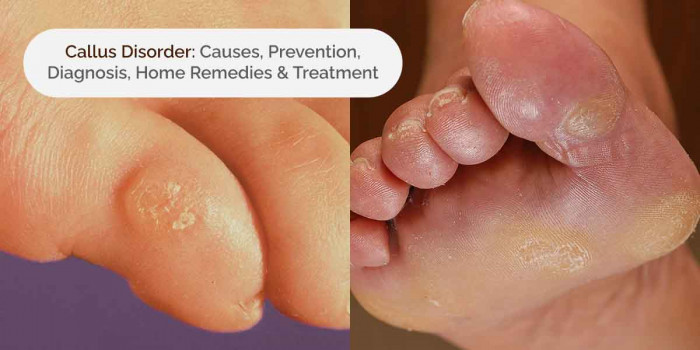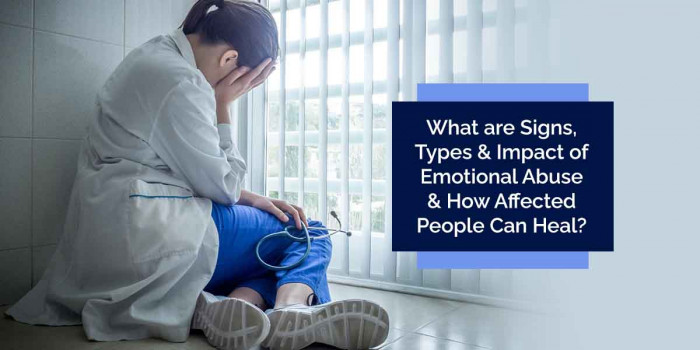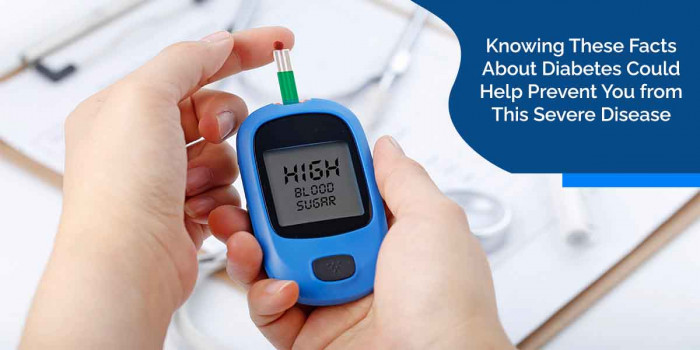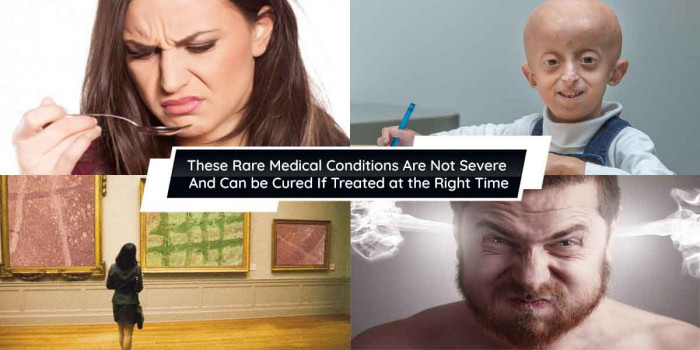Know the Causes, Symptoms, Prevention & Treatment of Callus Disorder
Callus disorder is a medical condition in which thickened skin forms in an area because of repeated pressure, friction, or other irritation. Read more here.

Have you ever heard, read, or know about callus disorder? It is a medical condition in dermatology in which an area of skin turns dry and hard (even unsightly) due to repeated rubbing, pressure, or other irritation. As frequent contact leads to callus formation, they commonly occur on feet due to frequent walking or poorly fitting footwear.
Calluses are usually not dangerous but may sometimes lead to other issues or complications (if neglected for longer periods) like skin infection or ulceration. To remove callus naturally is very simple, and for this, you can use things that are already in your home. The home remedies for callus, like baking soda and turmeric, make your legs soft and beautiful.
What Causes Callus?
A callus is caused when a part of the skin becomes exposed to excess friction over a long period. For instance, people usually develop calluses on the middle or ring finger of their dominant hand because of writing using a pen or pencil. One other cause is playing string instruments and develops on the four fingers and develops on the four fingers of the hand used in holding the strings down to the fingerboard.
Also, the weightlifters usually experience callus on the upper-palm area because of repeated friction. The rock climbers’ fingers also get affected by calluses. Tenpin bowlers develop a callus on the thumbs and sometimes the middle fingers. The Muslims often develop it due to frequent prostrations (called zebiba or prayer bump) required in Muslim prayer.
Other activities that may cause calluses are construction work, sports, wood carving, playing musical instruments, use of a chef's knife, rock climbing, hiking, martial arts, weight training, rowing, BMXing, dancing (especially ballet), chopping wood, monkey bars, and wearing high heels.
Though calluses can occur on any part of the body due to constant, grinding pressure, they are most likely to occur on foot (where the most pressure and friction are applied). On the feet, the balls of the foot, heels & small toes are where the most problematic calluses form due to tight-fitting shoes.
The calluses are biologically formed by the accumulation of terminally differentiated keratinocytes in the outermost skin layer. The callus cells are dead but are resistant to mechanical and chemical insults. It is the natural reaction of the palmar and plantar reaction.
A callus sometimes takes place even when there is no pressure or rubbing. Certain toxic materials like arsenic can cause thick palms and soles. Actinic keratosis, syphilis, and keratosis palmaris et plantaris are other conditions that cause corns (specially shaped callus of dead skin) or palm thickening.
Signs & Symptoms of Callus
The signs and symptoms of calluses are not known as it is asymptomatic. However, if friction is extreme, then callus may become thick and irritated and thus cause mild burning discomfort. Sometimes, the discomfort of calluses near the toes may be similar to that in interdigital neuralgia.
The corn may be tender or painful when the pressure is applied. Sometimes under corns, a bursa or fluid-filled pocket is formed. Some of the other common symptoms of calluses or corns are thick, rough & hardened skin areas, less sensitivity to touch than the surrounding skin, pain under the skin, blisters, redness, dry & flaky skin, and small, round & raised bumps.
Risk Factors & Diagnosis
People having diabetes should be extra careful as they are more vulnerable to callus, corns, and other skin issues. They often experience bleeding within the callus and also hematoma, ulceration, and even diabetic limb amputation due to foot infections.
Also, those who belong to certain occupations, smoke cigarettes, walk without socks, wear tight or poorly fitting shoes, abnormalities in gait or anatomy of the feet or toes, have medical conditions like arthritis in your feet, bunions, bone spurs, or hammertoes that change the normal alignment of bones in the feet.
Calluses can be diagnosed by visual examination or observing the specific changes in the skin. No specialized diagnostic tests are required. The doctor may ask you about the job, your posture, how long you walk or stand, the type of footwear you use, and your daily activities.
Preventing Calluses
Daily wearing the same shoes can cause calluses. Open-toed sandals are more likely to cause your feet to build up calluses, so put on socks with enclosed tennis shoes every few days to make your feet feel relaxed.
- Apply daily foot powder to keep feet dry and avoid sweat.
- Put on a comfortable pair of shoes that fit properly. Use toe separators or stuff lamb wool between the toes.
- Keep your skin dirt-free and dry.
- Wear shoes that can breathe. Shoes built from natural materials like leather allow more airflow to your legs than shoes created from synthetic materials.
- Wear padded gloves, protective pads/coverings (felt pads, non-medicated corn pads, or bandages), rings, or skin dressings when using hand tools. You can also pad the tool handles with cloth tape or covers.
- Keep the toenails trimmed.
- Prevent and reduce any damage in the skin, and people with poor circulation and sensation should check for any signs of rubbing or irritation.
- Do not walk barefoot.
- Check on your feet every now & then for any anomalies. Wash your feet with warm soapy water, dry them, and then put moisturizing foot cream.
Treatment & Home Remedies of Calluses
Some of the treatment methods for calluses and corns are manual removal, Keratolytics, cushioning, cushioning, alternating food biomechanics, and expert foot care. In the case of structural deformities in the foot or toes.
Corns or calluses may heal on their own when the irritation is constantly avoided. Callus or corns can be dissolved with keratolytic agents containing salicylic acid, sanded down with pumice stone or silicon carbide sandpaper, filed down using a callus shaver, or pared down by a professional like a podiatrist.
As a home remedy of callus, you can also use baking soda, turpentine oil, licorice, and turmeric to relieve the condition. A person with diabetes should consult a doctor rather than going for self-treatment.
Concluding Thoughts
If the skin is red, feels hot to touch, cracks, bleeds, and appears blue, then you must avoid trying to treat your callus or corns naturally at your home and rather consult your doctor. Take care!
Popular Posts
10 Amazing Lessons You Should Learn From Mr Olympia Jeremy Buendia
Jeremy Buendia is an fitness inspiration for people from all over the world, there is a reason why he has been so successful at what he has been doing. Don’t look for the reasons take some lessons from the fitness sensation right here, that can change your lives.
Ethan Stephans
Why Are Pubic Hair Thicker Than Body Hair?
As children we always had several questions about our bodies, which were alien to us, this post is to serve a decade-long curiosity of young boys/girls about their pubic hair and its texture.
Augustus Perez
7 Sleeping Tips That Every Woman Should Follow During Pregnancy
Pregnancy is not easy. Pregnant women experience a lot of changes in their bodies, like increased stomach size, frequent urination, and sleeping discomfort.
Still Unfold








